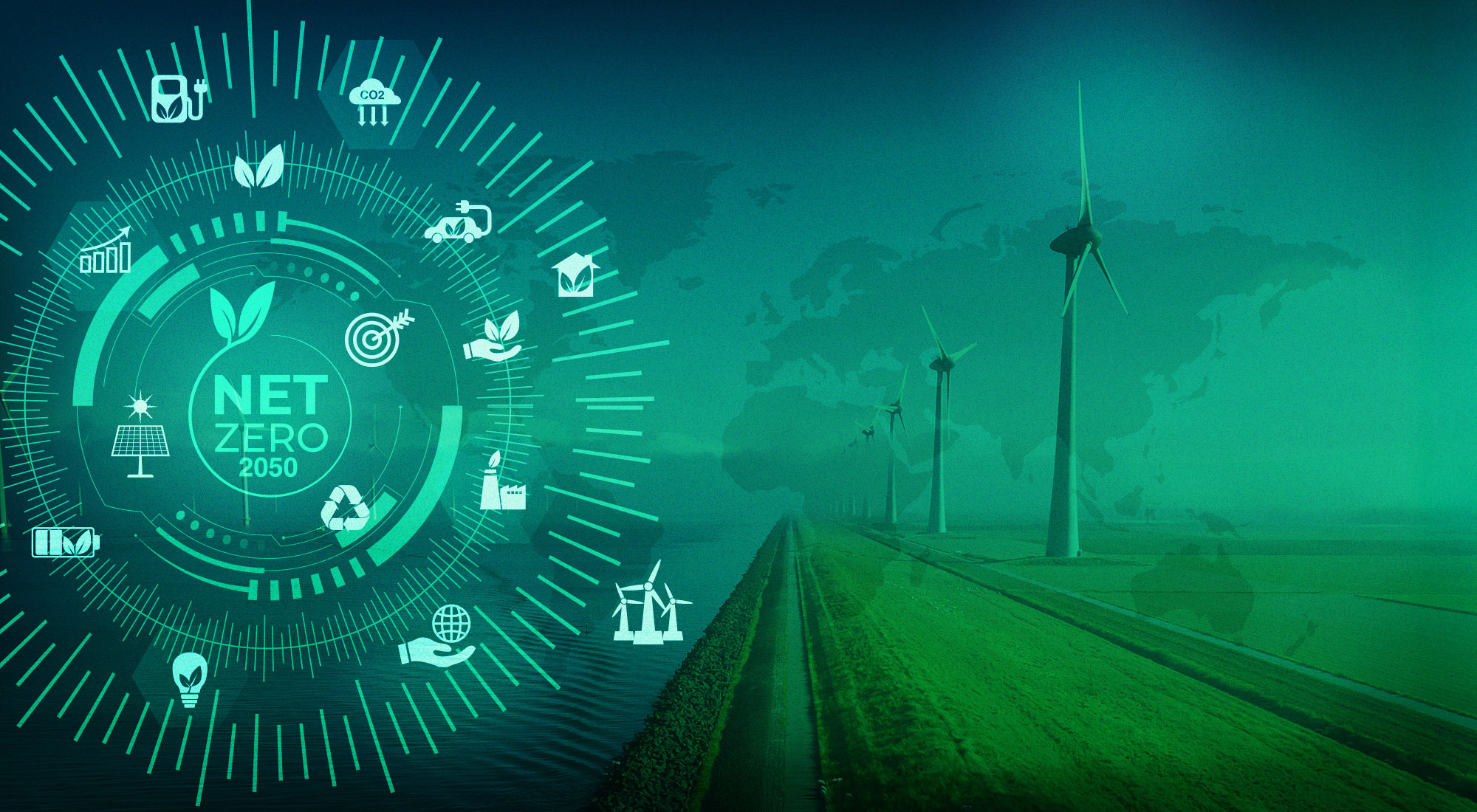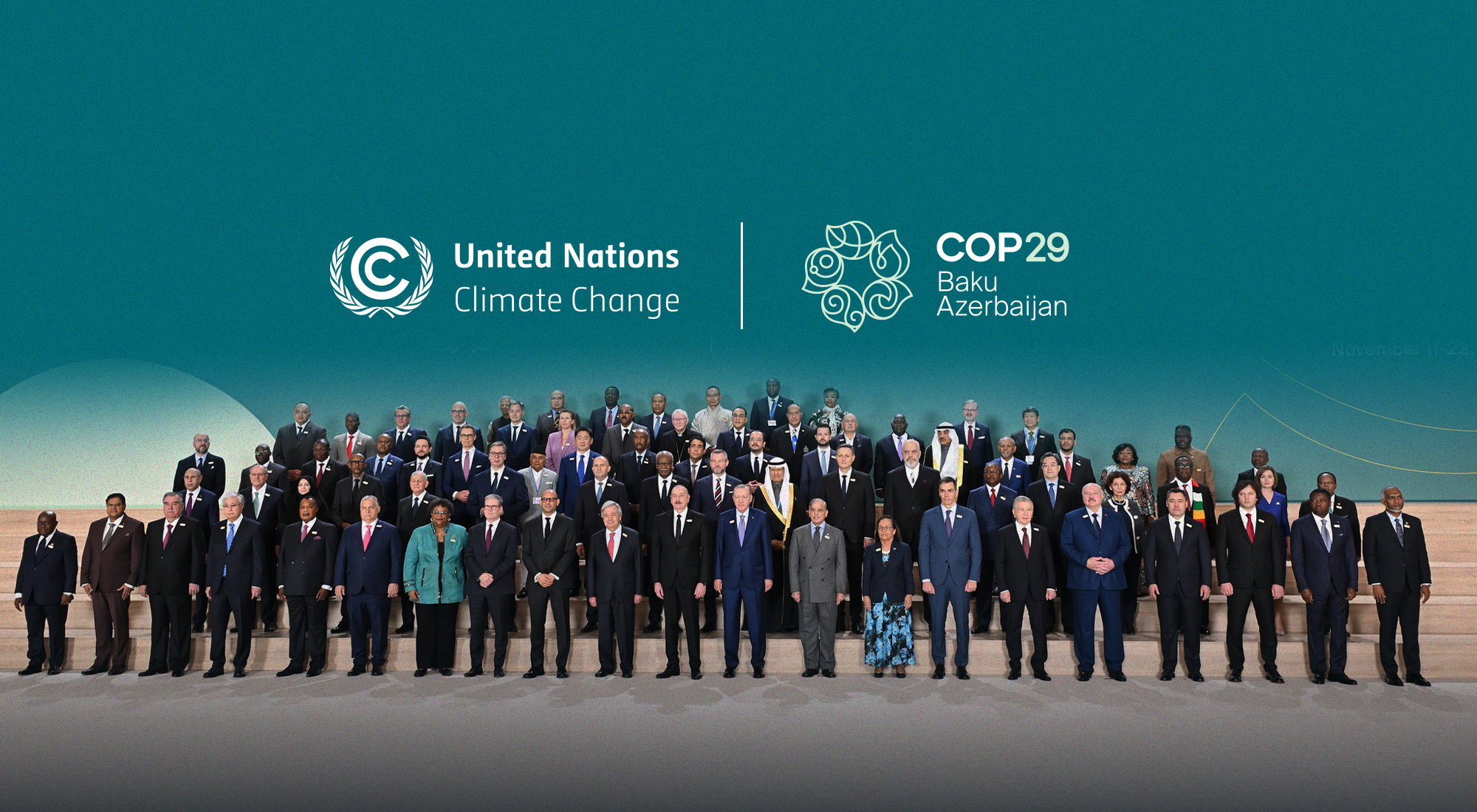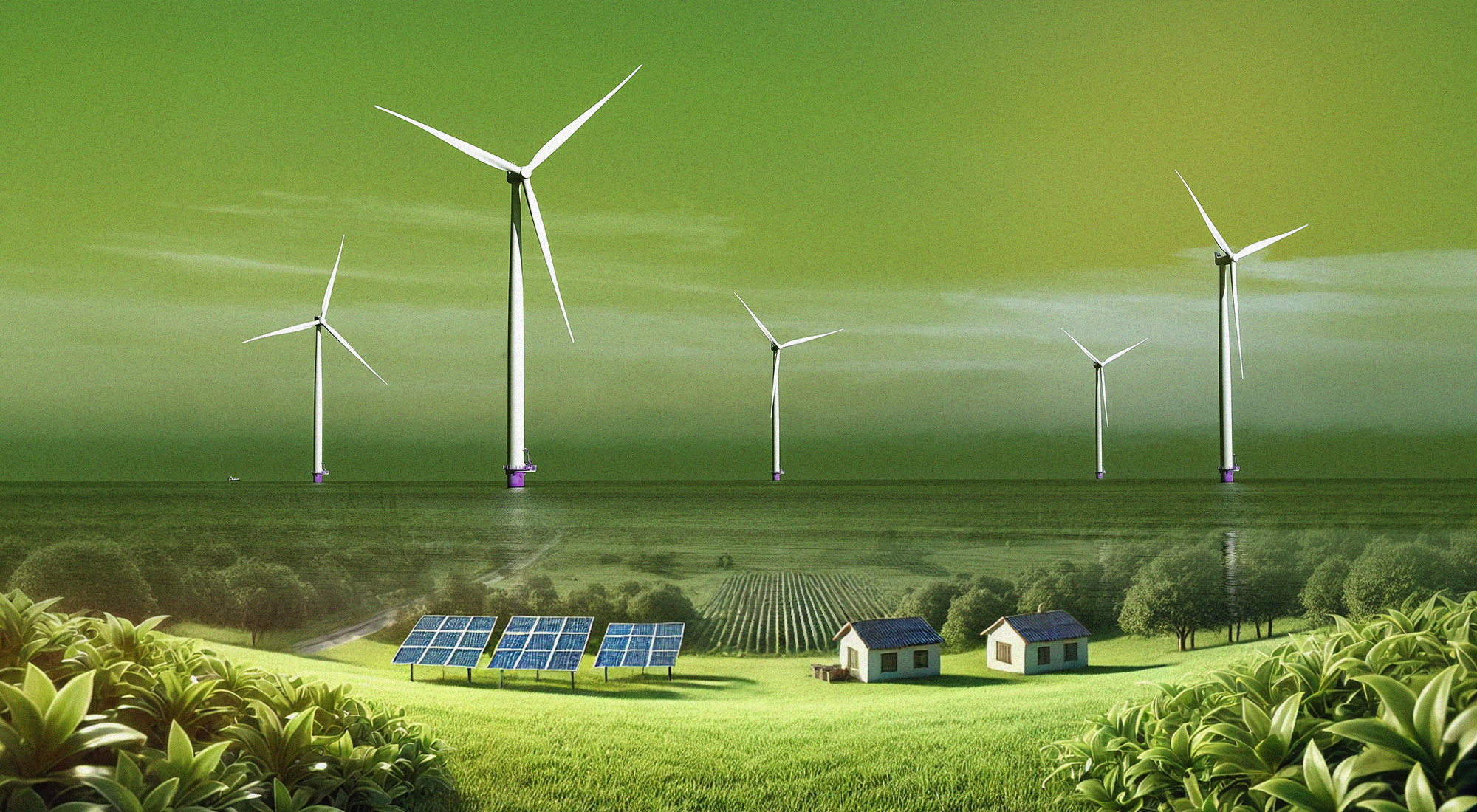Climate change is a global challenge that transcends national borders, yet its impacts are felt most acutely and unevenly, particularly by countries in the Global South.[1] Although developing nations have contributed relatively less to the historical accumulation of greenhouse gas (GHG) emissions, they are often the most vulnerable to climate-related disasters such as floods, droughts, and rising sea levels. Thus, climate action is not only a moral obligation for developed countries but also a strategic imperative for developing nations to protect their natural resources, food security, and the well-being of their populations. In this context, countries in the Global South—including Indonesia—play a critical role in steering the world toward a more sustainable and climate-resilient future. Indonesia holds a particularly strategic position in the global climate landscape. Indonesia, which has the largest tropical peatlands in the Asia-Pacific region and the second largest globally, is endowed with abundant natural wealth, from vast tropical forests and carbon-rich peatlands to significant potential for renewable energy.[2]
However, this richness comes with equally significant challenges: Indonesia is among the world’s top GHG emitters, particularly due to emissions from land use, forestry, and the energy sector.[3] Without robust intervention, emissions from these sectors could continue to rise in parallel with economic growth and urban development. Therefore, climate action in Indonesia is not only a matter of global responsibility but also intrinsically linked to its national agenda of ensuring ecological, social, and economic resilience.
Indonesia, as part of its commitment to the United Nations Framework Convention on Climate Change (UNFCCC), has introduced the Long-Term Strategy for Low Carbon and Climate Resilience (LTS-LCCR).[4], [5] This strategic document outlines Indonesia’s long-term vision to achieve low-carbon development and enhance climate resilience. The LTS-LCCR not only sets ambitious targets for emission reductions and climate adaptation but also emphasizes the importance of equity, inclusive participation, and sustainable development principles in every step of the transition. By adopting a holistic and science-based approach, the LTS-LCCR reflects how a developing country like Indonesia can take on a leadership role in the global climate agenda without compromising its national development goals. In this defining decade, the success of implementing this strategy will be a litmus test for Indonesia’s commitment to being part of the global solution to the accelerating climate crisis.
The LTS-LCCR Framework: Objectives and Timeline
Indonesia’s Long-Term Strategy for Low Carbon and Climate Resilience (LTS-LCCR) serves as the cornerstone of the nation’s climate commitment under the Paris Agreement. As submitted to the UNFCCC in 2021, this strategic framework articulates a vision for transitioning toward a low-carbon and climate-resilient future through an inclusive, just, and science-based pathway.[5] The document lays out Indonesia’s long-term emissions trajectory and identifies key milestones, indicators, and policy directions that align national development with global climate goals. At its core, the LTS-LCCR aspires to peak greenhouse gas (GHG) emissions by 2030 and to achieve Net Zero Emissions (NZE) by 2060—or sooner, conditional on international support and technological advancement. The primary objectives of the LTS-LCCR are threefold: (1) to reduce emissions across all key sectors in line with global climate targets, (2) to strengthen the nation’s resilience to climate-related shocks and stressors, and (3) to ensure that the low-carbon transition contributes to equitable and sustainable development. These goals are underpinned by a commitment to climate justice, where the burdens and benefits of the transition are distributed fairly across regions, sectors, and social groups. The strategy also integrates the principles of climate resilience by enhancing adaptive capacity and reducing vulnerability, especially among the most exposed communities.
One of the defining features of the LTS-LCCR is its emphasis on policy coherence and cross-sectoral integration. The strategy is aligned with Indonesia’s Nationally Determined Contribution (NDC) and the broader national development agenda, including the RPJMN (National Medium-Term Development Plan).[6] Furthermore, it recognizes the importance of coordination between national and subnational governments, particularly in sectors where implementation requires local engagement and action. A multi-dimensional framework can help understand these dynamic pathways by examining policy frames, subsystem involvement, policy goals, and instruments.[7] This multi-level governance approach is seen as vital to ensure that climate strategies are both context-specific and scalable. The LTS-LCCR document is designed to be a living strategy, responsive to changes in climate science, technological developments, and socio-economic dynamics. Regular reviews and updates are anticipated to reflect the evolving nature of climate risks and opportunities. This flexibility is crucial given the long-term horizon of the strategy and the uncertainties inherent in global climate trajectories. Ultimately, the LTS-LCCR represents a transformative vision for Indonesia’s future—one that balances environmental responsibility with economic and social progress. By setting clear targets and timelines, Indonesia demonstrates its intention not only to comply with international agreements but also to lead by example among emerging economies. The next challenge lies in translating this ambitious framework into concrete actions, policies, and investments that will define the country’s path toward a sustainable and climate-resilient future.
Priority Sectors: Focus on Forestry and Energy
In its long-term climate strategy, Indonesia has identified two priority sectors that play a pivotal role in both emissions reduction and climate resilience: forestry and land use (FOLU) and energy.[8] These sectors are not only the largest contributors to the country’s greenhouse gas (GHG) emissions but also offer some of the most significant opportunities for mitigation, adaptation, and sustainable development. Within the LTS-LCCR, these sectors are at the heart of Indonesia’s path toward peaking emissions by 2030 and reaching net-zero emissions by 2060 or earlier.
The Forestry and Other Land Use (FOLU) sector contributes approximately 24.5% of Indonesia’s total GHG emissions.[9] However, this figure is also reflective of the sector’s vast potential for carbon sequestration. Indonesia is home to one of the world’s largest areas of tropical rainforest, alongside extensive peatlands that store massive amounts of carbon. These natural ecosystems function as critical carbon sinks—yet they remain under constant threat from deforestation, illegal logging, peatland drainage, forest fires, and land conversion for agriculture and plantations. In response, the Indonesian government has made FOLU a central focus of its climate mitigation efforts. The LTS-LCCR places a strong emphasis on the “FOLU Net Sink 2030” target, which envisions the sector becoming a net carbon sink—absorbing more emissions than it emits—by the end of this decade.[10] Key actions include reducing deforestation through strengthened forest governance, increasing reforestation and afforestation, restoring degraded peatlands, enforcing land-use regulations, and implementing sustainable land-use planning. Efforts such as Indonesia’s One Map Policy and the moratorium on new palm oil concessions are examples of institutional reforms that support this vision.
Restoration initiatives, such as the Peatland Restoration Agency (BRG) and the Mangrove Rehabilitation Program, also exemplify Indonesia’s integrated approach to conservation and climate action.[11] These programs not only contribute to carbon sequestration but also protect biodiversity, improve water management, and enhance community resilience against climate risks like flooding and drought. These initiatives create green employment opportunities and offer co-benefits in terms of livelihoods and social inclusion, particularly for Indigenous and local communities. On the other hand, the energy sector, contributing around 14% of Indonesia’s emissions, represents the fastest-growing source of GHG emissions due to rising demand for electricity, transportation, and industrial activities.[12] Indonesia’s current energy mix remains heavily reliant on fossil fuels, especially coal, which accounts for over half of electricity generation. The transition to renewable energy is therefore essential not only for achieving the LTS-LCCR’s climate targets but also for ensuring long-term energy security and economic competitiveness.
The LTS-LCCR outlines a gradual but ambitious shift from coal to renewable energy sources, such as solar, wind, geothermal, and hydropower.[5] Indonesia has significant untapped renewable energy potential, particularly in solar energy, given its geographical location along the equator.[13] However, the pace of transition is constrained by several challenges: entrenched coal subsidies, inadequate grid infrastructure, regulatory uncertainty, and limited access to affordable financing for clean energy projects. To overcome these barriers, Indonesia is taking steps to improve its investment climate through policies such as the Renewable Energy Bill, feed-in tariffs, and the development of a carbon pricing mechanism.[14] In parallel, efforts are underway to phase down coal-fired power plants and explore early retirement schemes for existing facilities, supported by international initiatives such as the Just Energy Transition Partnership (JETP).
Energy efficiency is also a crucial pillar of the strategy. The LTS-LCCR promotes the adoption of low-emission technologies in industries, transport electrification (especially through electric vehicles), and energy conservation measures in buildings. These actions not only help to curb emissions but also reduce long-term operational costs and create new economic opportunities in green technology and innovation sectors. Importantly, the energy transition is envisioned as a just transition, ensuring that workers and communities dependent on the fossil fuel industry are not left behind. Vocational training, reskilling programs, and targeted social protections are highlighted as mechanisms to promote social equity and smooth the shift toward a green economy.[15] By prioritizing forestry and energy, Indonesia demonstrates an integrated approach to climate mitigation that balances environmental goals with development needs. These sectors are deeply interconnected with other national priorities, including poverty reduction, rural development, food security, and economic diversification.[16] Their transformation will not only define the trajectory of Indonesia’s climate future but also set a precedent for how emerging economies can lead the way toward inclusive and sustainable development in the era of climate change.
Implementation Challenges and Institutional Readiness
While Indonesia’s long-term climate strategy (LTS-LCCR) provides a comprehensive and ambitious roadmap for achieving net-zero emissions by 2060 or sooner, the effectiveness of this vision hinges on its practical implementation. The journey from policy to practice is riddled with structural, institutional, and capacity-related challenges. Understanding and addressing these constraints is essential to ensure that Indonesia can fulfill its climate commitments without compromising socio-economic development. One of the foremost challenges lies in institutional coordination and capacity, both at the national and sub-national levels. The implementation of the LTS-LCCR requires collaboration across multiple stakeholders, including ministries, agencies, provincial governments, and local authorities—each with its own mandates, priorities, and resource constraints.[17] Although Indonesia has made progress in integrating climate action into national development plans, such as through the National Medium-Term Development Plan (RPJMN) and the Low Carbon Development Initiative (LCDI), translating these plans into coherent, enforceable actions across sectors remains a major hurdle. Sub-national governments, in particular, play a crucial role in land use planning, forest management, and infrastructure development. However, many local administrations face limited technical capacity, insufficient data, and weak institutional frameworks to effectively implement climate policies.[18] Enhancing capacity building, data systems, and vertical policy integration is thus critical for mainstreaming the LTS-LCCR at the regional level.
Another significant obstacle is financing. Public funds alone are insufficient, and current climate financing remains inadequate relative to the scale of ambition.[19] The national budget must be strategically allocated to incentivize low-carbon development while leveraging innovative financing mechanisms such as green bonds, blended finance, and climate risk insurance. Attracting private sector investment is essential but contingent on regulatory clarity, risk reduction mechanisms, and bankable project pipelines. Policy uncertainty—particularly in the energy sector—and frequent changes to incentives or subsidy schemes undermine investor confidence. Strengthening policy consistency and providing transparent long-term signals to the market are fundamental to mobilizing the necessary capital flows. In addition, technology access and innovation pose a considerable challenge. Many of the solutions needed to transition to a low-carbon economy—such as advanced renewable energy systems, electric mobility, climate-smart agriculture, and carbon capture and storage—are either not readily available domestically or are prohibitively expensive. Indonesia relies heavily on international cooperation for technology transfer, research collaboration, and capacity development. Facilitating these partnerships requires stronger engagement in multilateral forums and effective alignment with global climate finance mechanisms like the Green Climate Fund (GCF), the Global Environment Facility (GEF), and Article 6 of the Paris Agreement.
Human resources and institutional readiness are also key concerns. Achieving deep decarbonization will require a skilled workforce capable of designing, managing, and implementing complex mitigation and adaptation programs. Currently, there is a shortage of professionals trained in climate science, energy transition, sustainable finance, and environmental governance.[20] Investing in education, vocational training, and upskilling initiatives—particularly for youth and local communities—must be prioritized to build a green economy workforce. The successful implementation of the LTS-LCCR depends on transparent monitoring, reporting, and verification (MRV) systems.[21] Robust MRV frameworks are essential to track progress, ensure accountability, and guide policy adjustments. Indonesia has made strides in developing MRV systems for sectors like forestry and energy, but many gaps remain in data availability, quality, and institutional integration. Strengthening the legal basis for MRV and enhancing data interoperability across government agencies are crucial steps forward. The role of civil society, academia, and the private sector cannot be overstated. These actors provide the innovation, advocacy, and on-the-ground knowledge needed to test solutions, hold institutions accountable, and drive behavioral change. Their inclusion in the planning and implementation of the LTS-LCCR can enhance legitimacy, foster co-ownership, and bridge the gap between national goals and local realities.
Indonesia’s dependence on international cooperation remains a double-edged sword. While global partnerships are critical for financing, technology, and capacity-building, they also introduce vulnerabilities, such as dependence on donor priorities, conditionalities, and political dynamics beyond national control.[22] Strengthening Indonesia’s domestic climate governance, while building equitable and mutually beneficial international partnerships, will be essential to maintaining sovereignty and resilience in the long-term implementation process. In conclusion, while Indonesia has laid a strong policy foundation through the LTS-LCCR, turning this vision into reality requires a whole-of-government and whole-of-society approach. Institutional readiness, adequate financing, technology access, skilled human capital, and robust monitoring mechanisms are not just technical requirements—they are the pillars upon which Indonesia’s climate future will stand. Navigating these challenges with resolve and cooperation will determine whether Indonesia can meet its climate targets and emerge as a global leader in sustainable development.
Indonesia in the Global Context: Comparison with Other Emerging Economies
Indonesia’s climate strategy, as embodied in the LTS-LCCR, exists within a broader tapestry of climate ambition and action among emerging economies.[5] These nations—while not historically responsible for the majority of greenhouse gas emissions—are becoming increasingly pivotal in shaping the global trajectory toward net zero. As members of the Global South, countries such as India, Brazil, South Africa, and Indonesia share similarities in terms of development priorities, socio-economic challenges, and vulnerabilities to climate change.[23] Yet, their approaches to climate action reveal distinct strategic choices, levels of ambition, and implementation pathways that reflect both national contexts and international pressures. In comparison to India, for instance, Indonesia’s target of achieving net-zero emissions by 2060 or sooner is slightly less ambitious. India has announced a net-zero target by 2070 but has committed to reaching 50% of its electricity from non-fossil sources by 2030 and reducing the emissions intensity of GDP by 45%.[24] India’s approach heavily emphasizes renewable energy expansion—particularly solar—and benefits from strong domestic manufacturing capabilities and scale economies. Indonesia, on the other hand, remains significantly reliant on coal and faces structural challenges in shifting its energy mix, especially due to existing coal-dependent infrastructure and long-term contracts in place. However, Indonesia’s LTS-LCCR offers a more detailed long-term vision compared to India’s current roadmap, especially in articulating cross-sectoral strategies and sector-specific emission pathways.
Brazil presents another compelling point of comparison, especially in the context of land use and forestry. Both Brazil and Indonesia are home to vast tropical rainforests that act as major carbon sinks, and both face ongoing pressures from deforestation driven by agriculture, logging, and land conversion. Brazil’s climate strategy has historically emphasized the reduction of deforestation in the Amazon as a core mitigation approach.[25] However, political shifts in recent years have led to fluctuating levels of commitment and enforcement. Indonesia, by contrast, has shown consistent progress in reducing deforestation rates since 2016, supported by its moratorium on new forest clearing and community-based forest management.[26], [27] The LTS-LCCR explicitly places the Forestry and Other Land Use (FOLU) sector at the center of its mitigation strategy, targeting a FOLU net sink by 2030. This sectoral clarity, combined with advances in forest monitoring and peatland restoration, gives Indonesia a strong comparative standing in land-based climate mitigation efforts.
In South Africa, the discussion about climate responsibility is closely tied to issues of economic justice and social inclusion. South Africa has committed to reaching net zero by 2050, with a strong emphasis on a “just transition” that supports coal-dependent communities and ensures equitable access to clean energy.[28] The country has received substantial international climate finance pledges, such as the Just Energy Transition Partnership (JETP), which offers a potential model for Indonesia. While both nations face similar challenges in transforming coal-heavy energy systems, South Africa’s approach has been more proactive in securing climate finance through structured international partnerships. Indonesia, too, is pursuing similar avenues, particularly under the Just Energy Transition Partnership signed at the G20 Summit in 2022, signaling a convergence in strategic orientation toward equitable transitions. What makes Indonesia’s LTS-LCCR strategy particularly unique among emerging economies is its integration of climate resilience and long-term planning into national development. Unlike many peers whose plans often emphasize short-to-medium term mitigation, Indonesia articulates a vision that balances decarbonization with poverty alleviation, economic growth, and adaptive capacity.[29] The strategy also underscores the importance of multi-stakeholder collaboration, engaging not just government institutions but also the private sector, academia, and civil society in a whole-of-society approach.[30] Furthermore, Indonesia’s archipelagic geography and exposure to climate hazards—such as sea-level rise, flooding, and extreme weather—add a layer of urgency and specificity to its adaptation agenda, making it a model of integrated climate risk management.
Indonesia’s positioning as the largest economy in Southeast Asia and a G20 member gives its climate decisions regional and global influence. Its leadership in ASEAN on sustainable development, its participation in international negotiations under the UNFCCC, and its ability to pilot climate finance mechanisms, such as green sukuk (Islamic green bonds), demonstrate its potential to serve as a regional catalyst for climate action.[31] While challenges remain in terms of execution and coherence, Indonesia’s LTS-LCCR offers a relatively holistic, realistic, and adaptable framework that others may learn from or even emulate. In essence, while Indonesia may not lead in terms of the earliest net-zero date or the sheer scale of renewable deployment, its approach offers a balanced and context-sensitive model for other emerging economies grappling with the dual imperatives of development and decarbonization.[32] By prioritizing climate resilience, social equity, and institutional integration, Indonesia is carving out a climate pathway that reflects its national circumstances while aligning with global climate ambitions. If successfully implemented, the LTS-LCCR could position Indonesia not only as a climate follower or respondent but also as a regional leader and global innovator in low-carbon development.
References
[1] G. Velmurugan, R. Subashini, Saravanabhavan Nallusamy, and Ajay Kumar Sharma, “The Environmental Impact of Rising Sea Levels on the Global South,” International Journal of Computational and Experimental Science and Engineering 11, no. 1, January 2025, DOI: 10.22399/ijcesen.857.
[2] A.B. Putra and C.B. Lee, “Indonesia’s Tropical Peatlands Revisited: Area, Depth, Carbon Potential, And Their Importance,” JOURNAL OF TROPICAL FOREST SCIENCE 36, no. 1, (2024): pp. 105–116, DOI: 10.26525/jtfs2024.36.1.105.
[3] Wahyu Catur Adinugroho, Lilik Budi Prasetyo, Cecep Kusmana, and Haruni Krisnawati, “Contribution of forest degradation in Indonesia’s GHG emissions: Profile and opportunity to improve its estimation accuracy,” IOP Conference Series: Earth and Environmental Science 399, no. 1 (December 2019): p. 012025, DOI: 10.1088/1755-1315/399/1/012025.
[4] Yohana Noradika Maharani, Ikhsan, and Teguh Wibowo, “Renewable energy transition in facing climate change in Indonesia,” IOP Conference Series: Earth and Environmental Science 1339, no. 1 (May 2024): p. 012036, DOI: 10.1088/1755-1315/1339/1/012036.
[5] Government of Indonesia, “Indonesia Long-Term Strategy for Low Carbon and Climate Resilience 2050 (Indonesia LTS-LCCR 2050),” 2021.
[6] Yohana Noradika Maharani, Ikhsan, and Teguh Wibowo, “Renewable energy transition in facing climate change in Indonesia.”
[7] Jeroen J. L. Candel and Robbert Biesbroek, “Toward a processual understanding of policy integration,” Policy Sciences 49, no. 3 (2016): pp. 211–231, DOI: 10.1007/s11077-016-9248-y.
[8] Ben Groom, Charles Palmer, and Lorenzo Sileci, “Carbon emissions reductions from Indonesia’s moratorium on forest concessions are cost-effective yet contribute little to Paris pledges,” Proceedings of the National Academy of Sciences 119, no. 5 (February 2022), DOI: 10.1073/pnas.2102613119.
[9] Hendri Hendri, Syarifudin Raharjo, Egi Suarga, M. Faruk Rosyaridho, and Julia Kalmirah, “Towards low carbon development strategies from forestry sector in West Papua,” IOP Conference Series: Earth and Environmental Science 989, no. 1 (2022): p. 012007, DOI: 10.1088/1755-1315/989/1/012007.
[10] W. S. Simorangkir, G. Golar, S. D. Massiri, S. Umar, and I. Rachman, “Indonesia’s Forestry and Other Land Use Net Sink 2030: How Preparedness Central Sulawesi to Start the Program?,” IOP Conference Series: Earth and Environmental Science, 1357, no. 1 (June 2024): p. 012001, DOI: 10.1088/1755-1315/1357/1/012001.
[11] Haris Gunawan, Dian Afriyanti, and Haryo A. Dewanto, “Show Windows and Lessons Learned from Peatland Restoration in Indonesia,” in Tropical Peatland Eco-management, (Singapore: Springer, 2021): pp. 751–774, DOI: 10.1007/978-981-33-4654-3_28.
[12] Rosalina Azmi, Putri Maslahat, and Johannes W. Wahono, “The carbon footprint from the power plant in Indonesia and renewable energy supply for reduce the carbon emission,” IOP Conference Series: Earth and Environmental Science 997, no. 1 (2022): p. 012008, DOI: 10.1088/1755-1315/997/1/012008.
[13] Fadhilah A. Suwadana, Pranda M. P. Garniwa, Dhavani A. Putera, Dita Puspita, Ahmad Gufron et al., “Solar Irradiance Estimation in Tropical Regions Using Recurrent Neural Networks and WRF Models,” Energies 18, no. 4 (2025): p. 925, DOI: 10.3390/en18040925.
[14] I. Made Ronyastra, Lip Huat Saw, and Foon Siang Low, “Techno-economic analysis with financial risk identification for solar power plant as post-mining land use in Indonesia,” Energy for Sustainable Development 80 (2024): p. 101462, DOI: 10.1016/j.esd.2024.101462.
[15] Eko Swi Damarwan, Nurhening Yuniarti, Alex Sandria Jaya Wardhana, and Pramudita Budiastuti, “Development of renewable energy hybrid training kit based on solar panels and wind power plants as green technology education,” AIP Conference Proceedings (2025): p. 040003, DOI: 10.1063/5.0261183.
[16] Rio Aryapratama and Stefan Pauliuk, “Life cycle carbon emissions of different land conversion and woody biomass utilization scenarios in Indonesia,” Science of The Total Environment 805 (2022): p. 150226, DOI: 10.1016/j.scitotenv.2021.150226.
[17] Catur Budi Wiati, I Wayan Susi Dharmawan, Niken Sakuntaladew, Sulistya Ekawati, Tien Wahyuni et al., “Challenges to and Strategies for the Climate Village Program Plus: A Lesson Learned from Indonesia,” Sustainability 14, no. 9 (2022): p. 5530, DOI: 10.3390/su14095530.
[18] Muhammad Mutawalli Mukhlis, Maskun, Muhammad Saleh Tajuddin, Dewi Andriani, Rizal Muchtasar, and Ahmad Masum, “Regional Government Autonomy In Indonesia: The Ambiguity Of The Federalism Or Republic Model,” Malaysian Journal of Syariah and Law 13, no. 1 (March 2025): pp. 35–57, DOI: 10.33102/mjsl.vol13no1.760.
[19] W. S. Winanti, T. W. Sudinda, R. Oktivia, I. M. Ihsan, M. Ikhwanuddin et al., “Barrier analysis to leverage the climate change mitigation-adaptation implementation action in mangrove forest and its surrounding community villages,” IOP Conference Series: Earth and Environmental Science no. 1 (2023): p. 012062, DOI: 10.1088/1755-1315/1201/1/012062.
[20] Udin Udin, “Renewable Energy And Human Resource Development: Challenges And Opportunities In Indonesia,” International Journal of Energy Economics and Policy 10, no. 2, (2020): pp. 233–237, DOI: 10.32479/ijeep.8782.
[21] Bruno Perosa, Peter Newton, and Ramon Felipe Bicudo da Silva, “A monitoring, reporting and verification system for low carbon agriculture: A case study from Brazil,” Environmental Science and Policy 140 (February 2023): pp. 286–296, DOI: 10.1016/j.envsci.2022.12.006.
[22] Mohamad Rosyidin, “Playing Identities, Preserving Interests: Balance of Identity and Indonesia’s Foreign Policy Dilemma Amid the China-US Rivalry,” Asian Perspective, no. 2 (2023): pp. 267–290, DOI: 10.1353/apr.2023.0014.
[23] L. Mello, Growth and Sustainability in Brazil, China, India, Indonesia and South Africa, OECD, 2010, DOI: 10.1787/9789264090200-en.
[24] Vigya Sharma and Mayank Aggarwal, “Can meaningful consultation and consent advance fair and equitable large-scale renewable energy development? Reflections from India,” Energy for Sustainable Development 85 (April 2025): p. 101613, DOI: 10.1016/j.esd.2024.101613.
[25] Debora Joana Dutra, Marcus Vinicius Freitas Silveira, Guilherme Mataveli, Poliana Domingos Ferro, Deila da Silva Magalhães et al., “Challenges for reducing carbon emissions from Land-Use and Land Cover Change in Brazil,” Perspective in Ecology Conservation 22, no. 3 (July-September 2024): pp. 213–218, DOI: 10.1016/j.pecon.2024.04.004.
[26] Elías Cisneros, Krisztina Kis-Katos, and Nunung Nuryartono, “Palm oil and the politics of deforestation in Indonesia,” Journal of Environmental Economics and Management 108, (July 2021): p. 102453, DOI: 10.1016/j.jeem.2021.102453.
[27] Truly Santika, Erik Meijaard, Sugeng Budiharta, Elizabeth A. Law, Ahmad Kusworo et al., “Community forest management in Indonesia: Avoided deforestation in the context of anthropogenic and climate complexities,” Global Environmental Change 46 (2017): pp. 60–71, DOI: 10.1016/j.gloenvcha.2017.08.002.
[28] Sandylove Afrane, Jeffrey Dankwa Ampah, Abdulfatah Abdu Yusuf, Zhao Jinjuan et al., “Role of negative emission technologies in South Africa’s pathway to net zero emissions by 2050,” Energy for Sustainable Development 79 (April 2024): p. 101401, DOI: 10.1016/j.esd.2024.101401.
[29] S. Turner-Walker, E. Anantasari, and A. Retnowati, “Integration into Development: Translating International Frameworks into Village-Level Adaptation,” 2021, pp. 53–77, DOI: 10.1007/978-3-030-55536-8_4.
[30] Lorren Kirsty Haywood, Nikki Funke, Michelle Audouin, Constansia Musvoto, and Anton Nahman, “The Sustainable Development Goals in South Africa: Investigating the need for multi-stakeholder partnerships,” Development Southern Africa 36, no. 5 (2019): pp. 555–569, DOI: 10.1080/0376835X.2018.1461611.
[31] Muhammad Iqbal Balative, Eri Hariyanto, Athius Sholikhah, and Ricky Gigih Prayoga, “A Closer Look at Indonesia’s Experience in Developing Green Sukuk,” in Islamic Finance and Sustainability (London: Routledge, 2025): pp. 441–464, DOI: 10.4324/9781003518617-23.
[32] Arief Rahman, Russell Richards, Paul Dargusch, and David Wadley, “Pathways to reduce Indonesia’s dependence on oil and achieve longer-term decarbonization,” Renewable Energy 202 (2023): pp. 1305–1323, DOI: 10.1016/j.renene.2022.11.051.









